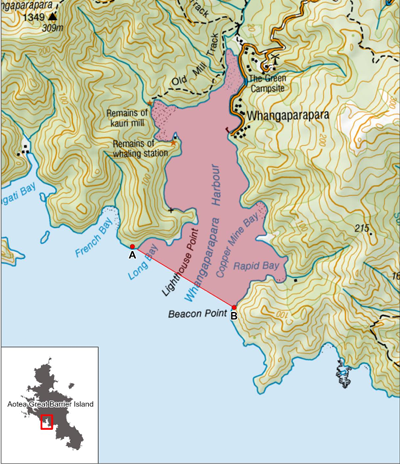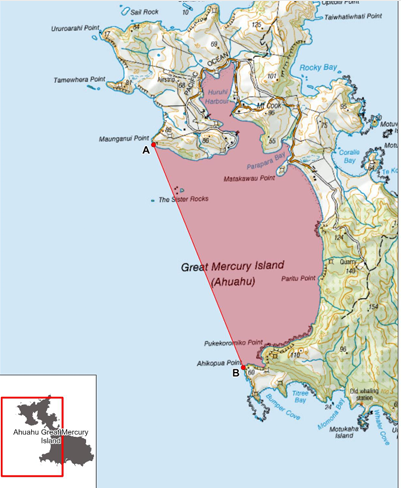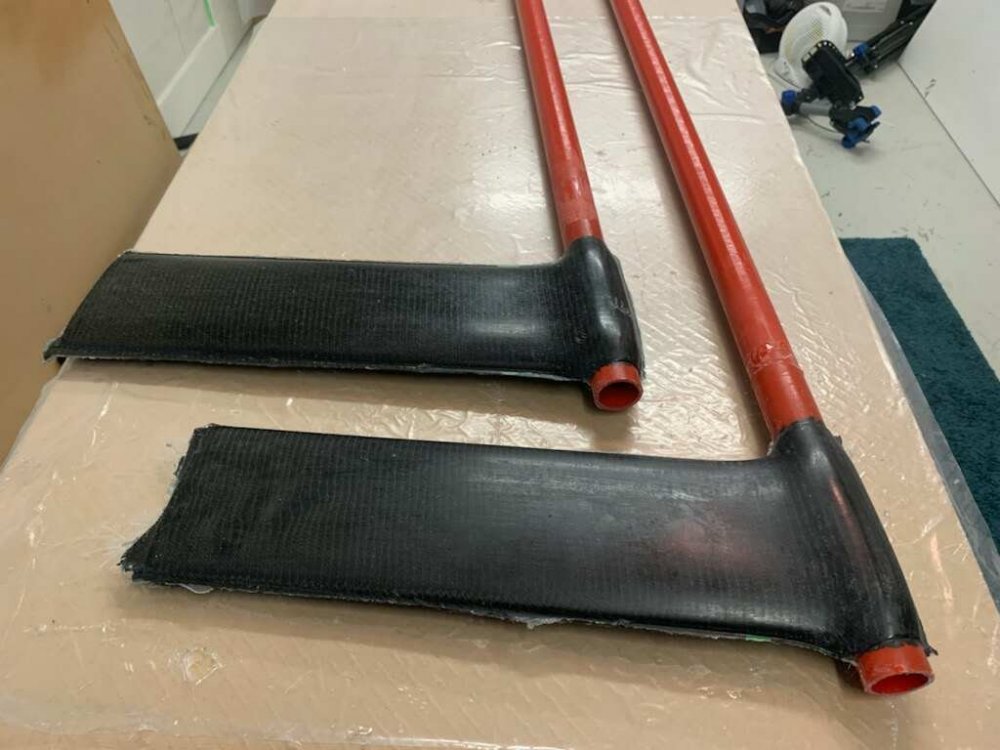-
Content Count
8,505 -
Joined
-
Last visited
-
Days Won
244
Content Type
Profiles
Media Demo
Forums
Gallery
Calendar
Store
Posts posted by Island Time
-
-
No rudder response is pretty common. From standby, push the port or stb button. Does the rudder actually turn? Not does the drive run ( although check that 2) but does the rudder shaft move?
If not, drive issue , if yes, Rudder angle sensor.
No rudder response means AP is commanding rudder to move, but nothing happening.
I'm a Simrad tech.
-
 1
1
-
-
Ill be down by A pier. You'll see the Neptune's Gear Van, give me a call when you get there and I'll come up. Only issue will be that I intend to go out in the boat until 13th on Monday, and probably wont be able to do it until I get back. If you want it meantime, probably best to hang onto it for a bit, and I can do it when I really return to work?
Matt 0221539176
-
I can probably sort it for you when I'm back. I'm at westhaven tomorrow for a warranty job if your nearby? Planning to go boating Monday until 13th...
Matt
-
1 hour ago, 1paulg said:
chlorine destroys carbon filters pretty quickly - I wouldnt recommend using anything v low concentrations otherwise factor in writing off your carbon filters as part of that process and replace
Source please? My understanding it that Activated carbon filters are used to remove chlorine? Certainly we have shock dosed our watertanks and not had issues with the drinking water via the 0.5 micron carbon filter. Water tasted fine ...
-
A lot of the inner coast of barrier is closed AND the MERCS!



AND ALSO THE MERCS!

-
 2
2
-
-
nah, amazing what you can lift if you think you'll die if you don't! best place is in stern locker, preferably accessible if inverted. But most yachts don't have that facility.
-
 1
1
-
-
My understanding is that STF etc are NOT responsible for this, and due to the lack of secure future at this site, no-one has been prepared to invest in any infrastructure on the site. IMO this is the councils issue, and from this no properly run company would put money in, unless a future was assured. Looks like STF's decisions are about to be proven correct!
-
 1
1
-
-
It'll work, but the B&G specific stuff wont be available, like calibration, battery display etc. Best to have a Triton display as well so as to get it perfect... However, I have done another one on a Garmin mfd, and as the wind data is just N2k, it allowed offsets for direction at the MFD. I'd not guarantee they are all like that!
-
If I was to do this as a delivery, I'd be working on 3-4 months. Its a long way, and there will be considerable wear/tear on the boat, motor, sails and all. This is the equivalent of about 10 years of local sailing. When you consider that, the ship is not that expensive (and lot more reliable and quicker). If not sailing yourself, a delivery skipper would likely charge about $50k for that voyage, + expenses and + Crew.
If you are relocating, sell the boat here and buy another. Not really worth moving her. IMO
-
Provided your garmin has N2K it will work fine, but as above, with no battery display.
$1000 + GST for the masthead unit and sender, 13 in stock ex navico Sydney right now, delivery about a week.
-
On 26/11/2022 at 4:51 PM, CarpeDiem said:
In a previous life, when I was much younger, I spent a lot of time climbing mountains and for a while was an Apline instructor. So have had quite a bit of exposure to Prussicing in extreme environments.
Prussic's are very iffy on technical ropes, eg, if the rope you are climbing has a Dyneema outer then using a prussic could result in death.
Prussic's are hopeless on iced up ropes, probably won't occur on a boat for any one reading this... But keep it in mind.
More importantly on a boat, be aware of wet ropes. Wet ropes can also greatly reduce the friction. This includes the line you are climbing and the Prussic line.
The classic prussic, shown above in IT's first post, is hands down the best for ascending and descending a rope. Even if you are planing on escaping the system at the top of the rig and using a descender, you need to consider that you may have to down climb one day.
The French prussic, in the second image, is not great for ascending because the fisherman's knot works its way up around the rope, creates less friction and can easily cause a run away, if not managed carefully. It only likes going one way which is down. This prussic is best used as a backup when decending, eg, in case you let go of the rope.
The best prussic for ascending is the Klemheist Prussic. It's similar to the French, but does not suffer from the roll over risk. But it is hopeless for descending because it hates going down the rope. (which makes it the best candidate for ascending). So if you have any doubt if you can escape the system and transfer to a descender, then I could not recommend the Klemheist.
There's another Prussic called a Belchmen (sp?) it's also very good for ascending but you have to be well practiced on the lines you are intending to use to know that it will work for you.
Your Prussic rope should be 60% to 70% the diameter of the rope you are climbing. 6mm works well for 10mm ropes.
The one bit of advice I would give to anyone is to try it out. Having done a lot of prussicing in the past, I know that I absolutely do not have the fitness levels required to get to the top of my very short mast...
After reading this, and re-looking at the pic, the french prussic pic I posted isnot right either! This IS the one I use, and not had issues with, Very similar, but a little different!

Always thought that was a French prussic! Learn something new every day I guess!
You do need to get all the weight off it for descending, but that's pretty easy with foot loops. I use four. One shorter one at chest level on the harness/bosuns chair, two foot loops, and another to the safety halyard from the harness/bosuns chair. easy to stop for a rest then!
-
 2
2
-
-
On 24/11/2022 at 8:05 AM, aardvarkash10 said:
I'll be using a prussic as a safety,, but I wanted something that looks more positive for climbing! I watched a few videos of people using just prussics. My sphincter puckered.
Ok, that pic is not entirely accurate. It's an English prussic. I've found they can slip on occasion. So I changed to a French prussic, which only locks in one direction, but you can't fall up!
-
 1
1
-
-
Mine way more high tech!
But the secret is big loops and decent footware. Lift with your legs.... don't try to climb with your arms!
-
 2
2
-
-
Volts are not a good indication of state of charge, unless the battery has been at rest (no charge or discharge) for 10 hours. That is unrealistic.
Battery monitors can be good or bad. Even the same models. Depending on setup and understanding of the user.
Apart from the new balmar SG 200, which is quite clever, and learns the battery over a few cycles, the others all must be setup properly, or won't tell the truth!
I like the Victron BMV-712 - smart. It has a shunt to measure amps in/out, but you must program actual capacity, Peukerts number, fully charged volts and tail current to make them accurate. Your battery manufacturer should be able to provide this info. Once done, they are a great asset, as they can easily tell you battery %, voltage, and current in and out, including to an app on your ph via bluetooth, showing historical data etc. I have used this data several times to get batts replaced under warranty for customers.
-
Got any pics?
-
4 hours ago, ballystick said:
How about this person http://www.efrontier.co.nz/estore/index.php?currency=NZD I think he out SW Auckland, hard to understand when you talk to him
These guys import cheap Asian products that often don't meet AUS/NZ standards. They either don't know or don't care. They wont have access to garmin parts as they are not garmin service agents. Be aware that any radio frequency equipment that does not meet the standards is illegal to use in NZ. Seems you can sell it, you just cant use it legally. To do so (although the risk of being caught is very low) is to risk a large fine.
-
 1
1
-
-
No one does repairs as far as I can find out. Garmin are not interested in anyone doing so either. I tried to get a service agency, just a straight out NO, we have enough agents. Garmin (marine support at least) seems non existent in NZ. There are only resellers, no electronics tech support. Post up here if you find anyone who can help!
-
-
Hmm, you might like to consider this from the Facebook Marine Electrics forum admin, Rod Collins. I consider Rod one of the world experts in this field (bold and underlined by me);
WE are now allowing used electrical gear to be sold in the group..WARNING:Only legit Marine brands EG: Victron, Magnum,Outback, BLUESEA SYSTEMS Ancor Balmar, Mastervolt Sterling Power, Pro Mariner.etc. No Pop-up/phony"brands" that masquerade as quality products such as Renogy, Scamzon electrical parts etc. etc..No Noco products. No used LiFePO4 batteries unless a quality brand such as Lithionics, Mastervolt,orVictron, (Battleborn would be the lowest quality allowed.) No DIY … -
Nope, would not upload for me either. Sent message and files to editor. Happy I don't have to do this any more!!
-
 1
1
-
 1
1
-
-
Good job Steve. There would be a few here who would be happy to discuss this with them. They could even create a user just for that? I'd believe it after it happened though!
-
22 minutes ago, funlovincriminal said:
So after a week of fiddling, testing and measuring it would appear I have excorised the demons from my freezer.
Wound txv in a couple of turns and back out to original position half a turn per day.
Been keeping a bunch of bottles of frozen water and hello fresh freezer packs in there and running motor freezer every day at random times, and happy to report its worked every day.
Not an easy task when not on a marina!
My jubilation at possibly saving $1000 or so was short lived this morning when I found that the knead-it repair I did on the exhaust elbow last year was indeed temporary, the raw water pump has developed a drip and the hot water cylinder has a puddle of bright red yanmar engine coolant under it.
Amazing what you pick up when sitting around waiting to measure freezer Temps every day!
Ha ha, yep, its the time it takes that gives the poor reputation these systems have. If your prepared to learn and do it yourself, they are great and reliable once sorted, but if you pay for this, it takes time and is therefore expensive!
-
 1
1
-
-
Just keep this in mind. Some installs Ive seen, the alternator charges the start batt, DC-DC charges the LiFePo4. Technically OK, BUT you loose the main (IMO) advantage of LiFePo4 in that most DC-DC chargers dont have anywhere near the output of a decent alternator, so you bank charges much more slowly. Better, (also IMO) is to use a proper good alternator, with ext reg and temp sensing - for the ALT! to charge the LiFePo4 and then DC-DC to charge the Start and Accessory (Thrusters, winches etc) batts.
This is a very good doc on LiFePo4 - incl some basic setup diagrams https://marinehowto.com/drop-in-lifepo4-be-an-educated-consumer/
-
TX valves are not simple (except mechanically!), as they adjust superheat. Superheat is a concept many struggle with. Here is a good article on the subject https://www.achrnews.com/articles/96890-understanding-superheat
So, in this case, what I was talking about is that the TX valve also regulates how much refrigerant can pass, and effectively slow down or speed up the flow rate in the system. The frosting on the return line is where the liquid refrigerant is getting to before reverting to gas.
If the flow rate is too fast, liquid can get back to the compressor - cant compress liquid = compressor failure.
What you want is for the liquid refrigerant to loose most of it's cold energy in the eutectic tanks - which it can't do if it travels thru too quickly. So, you can slow the flow rate by closing (clockwise) the TX valve a bit (1/4 turn at a time) and this will move the the frosting back up the line some...
This is why refrigeration is a dark art to many!
-
 1
1
-
 1
1
-






Simrad autopilot
in TechTalk
Posted
Dodgy reception, put in lots of spaces!